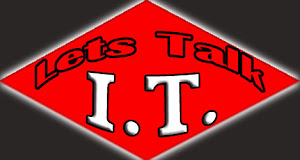Although Qimonda weeks ago to tell the bankruptcy, but the final decision until they were still concentrating on the future structure of the company. DRAM producers from Germany is trying to continue their business as usual.
This week they try to re-introduce their new products, DDR3 memory modules 2GB smallest world. DRAM technology is based on 46nm buried Worldline, which was developed by Qimonda.
2GB Memory DDR3 DRAM is based on 46nm technology, Qimonda has buried Wordline fixed size of less than 55mm square. Technology is translated into increases in productivity significantly compared with the technology at this time. Qimonda intends to start commercial production for this new product in the middle of this year 2009. And actively menjari partner funds to support and realize this plan.
Recently, Intel Corporation Qimonda reward that has been leading the DDR3 technology.
46nm technology Qimonda akan collapse doubled the number of chips per wafer (each chip) and compared with the 75nm technology last. At the same time, the chip is expected to significantly reduce power consumption up to 75% in the module high-density DDR3. This is a new technology platform that is suitable for the market to encourage conversions from DDR2 to DDR3 technology, predicted that in the middle of this year.
This week they try to re-introduce their new products, DDR3 memory modules 2GB smallest world. DRAM technology is based on 46nm buried Worldline, which was developed by Qimonda.
2GB Memory DDR3 DRAM is based on 46nm technology, Qimonda has buried Wordline fixed size of less than 55mm square. Technology is translated into increases in productivity significantly compared with the technology at this time. Qimonda intends to start commercial production for this new product in the middle of this year 2009. And actively menjari partner funds to support and realize this plan.
Recently, Intel Corporation Qimonda reward that has been leading the DDR3 technology.
46nm technology Qimonda akan collapse doubled the number of chips per wafer (each chip) and compared with the 75nm technology last. At the same time, the chip is expected to significantly reduce power consumption up to 75% in the module high-density DDR3. This is a new technology platform that is suitable for the market to encourage conversions from DDR2 to DDR3 technology, predicted that in the middle of this year.








0 komentar:
Post a Comment